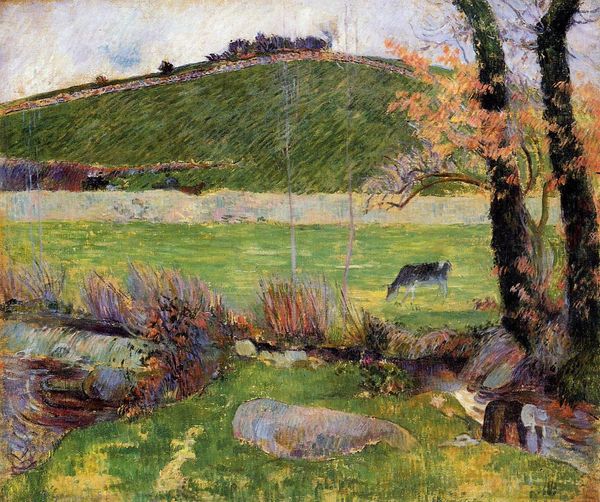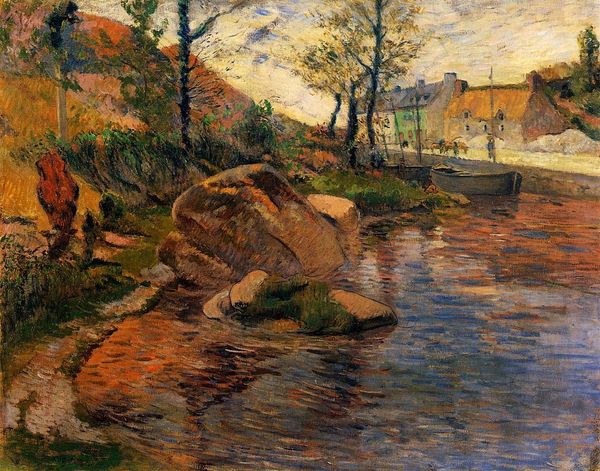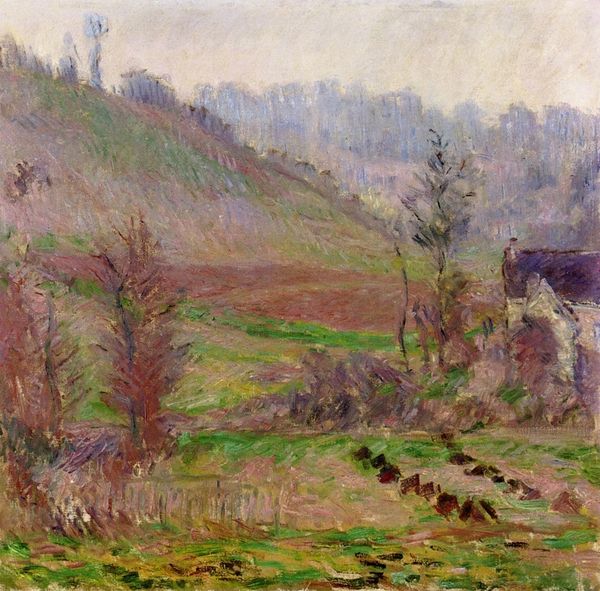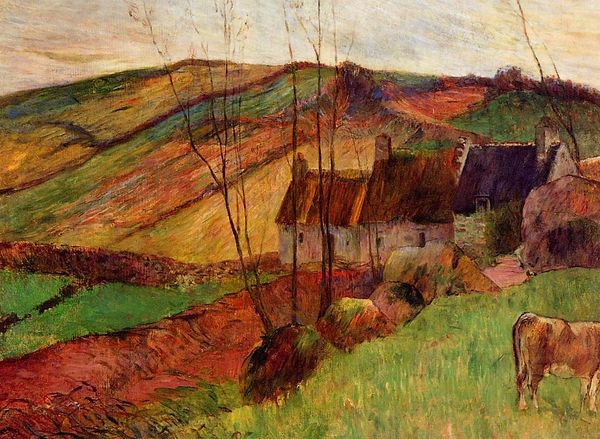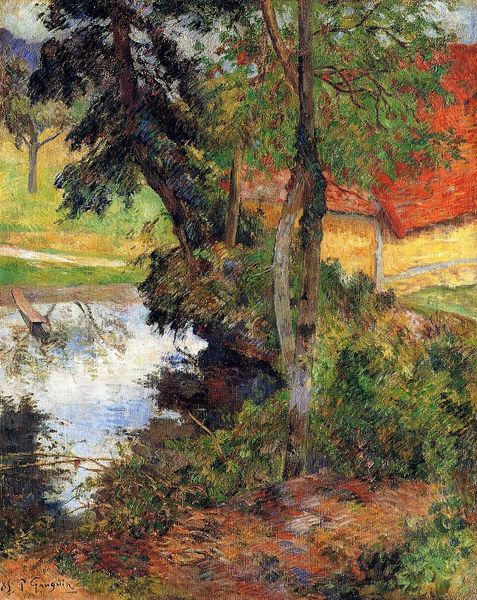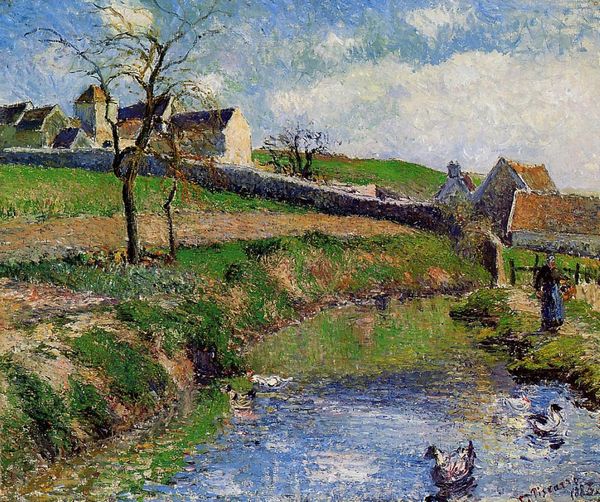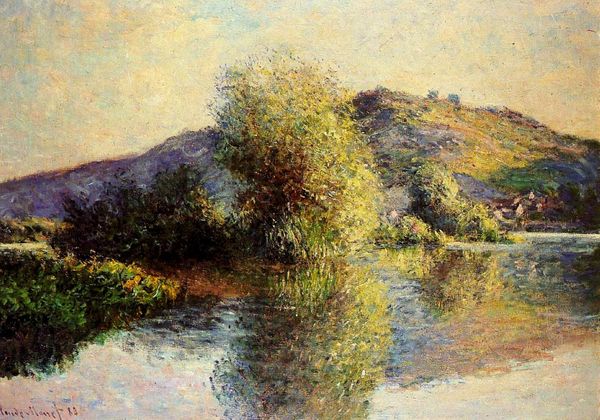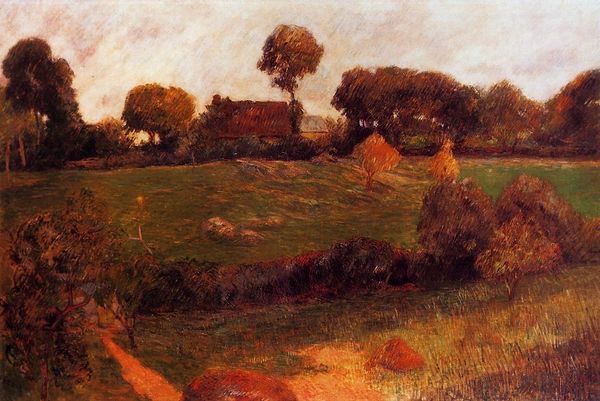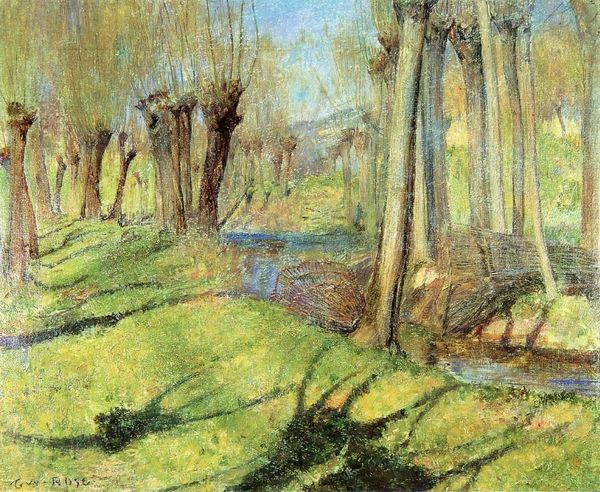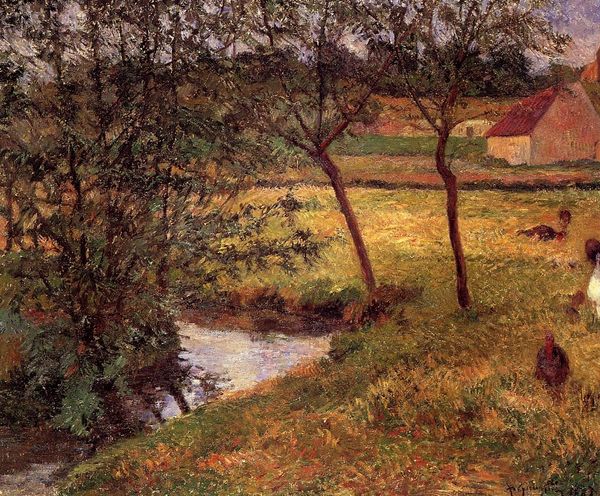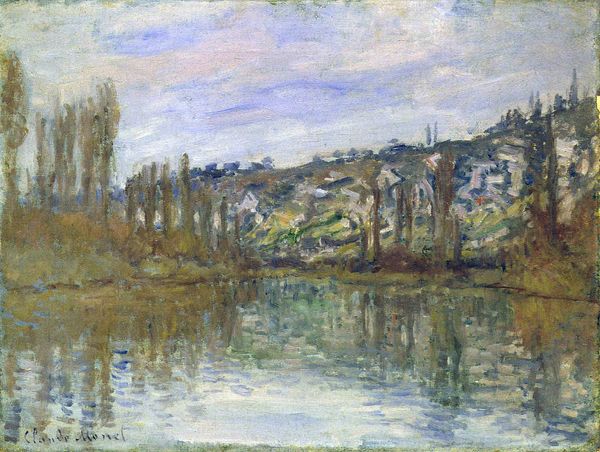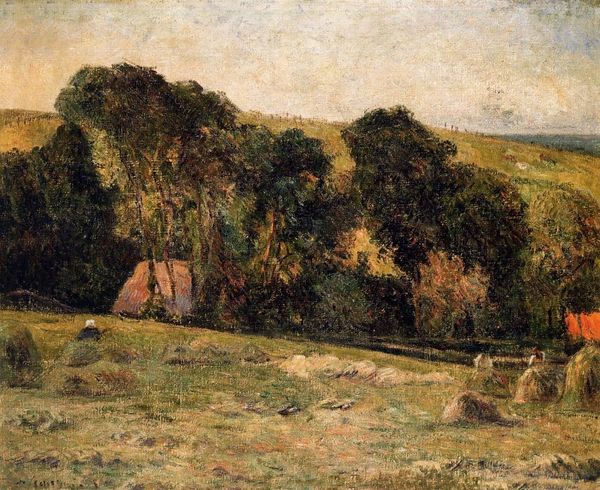
Copyright: Public domain
Curator: Good morning. Here we have Paul Gauguin's "River Aven below moun Saint Marguerite," an oil painting created in 1888, currently residing at the Artizon Museum in Tokyo. Editor: It's quite earthy, wouldn't you say? A palette grounded in browns and greens. There is a tangible roughness to the application of the oil-paint, a sort of pre-industrial feel to the land itself. Curator: Precisely. Notice the structural arrangement of the landscape. The hill's rise is mirrored, in a way, by the riverbed, creating a visual dialogue between earth and water. And the strategic placement of trees disrupts what might be a too-simple reading. Editor: And what trees they are. They feel very stark, almost pollarded. The treatment suggests a constant cycle of harvesting and renewal – almost brutally managed woodland as an aspect of an agricultural process. I'm very drawn to the way the materiality itself emphasizes the social imprint on this supposedly 'natural' scene. Curator: An intriguing point. The composition’s colors evoke a palpable feeling of transition, possibly reflective of Gauguin's own transition away from Impressionism towards something altogether more personal and evocative. His use of brushstrokes does push away from naturalism toward some expression of how it feels to *be* there rather than documenting visual fact. Editor: Consider too, that this painting emerges from a milieu increasingly concerned with industrial labor, with debates about authenticity and 'the handmade'. Gauguin would, of course, remove himself still further from centers of industrial labor and its processes to focus on hand craft within communities far removed from manufacturing practices, and I think here we see him starting that turn away from traditional techniques as well. Curator: The way that you describe his methods is a relevant connection with that era, and an early inflection towards that interest that culminated with his work in Tahiti. And looking at the work in those terms adds so much dimension. Editor: It truly does change the perspective, and focusing on materiality is essential to gaining understanding of Gauguin’s motives. I shall not see his artistic expression the same way again!
Comments
No comments
Be the first to comment and join the conversation on the ultimate creative platform.
